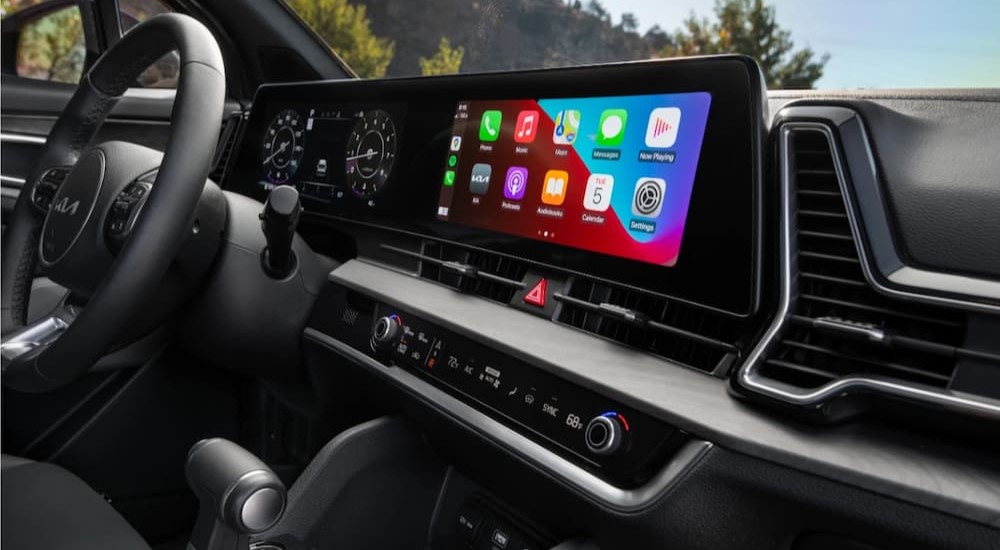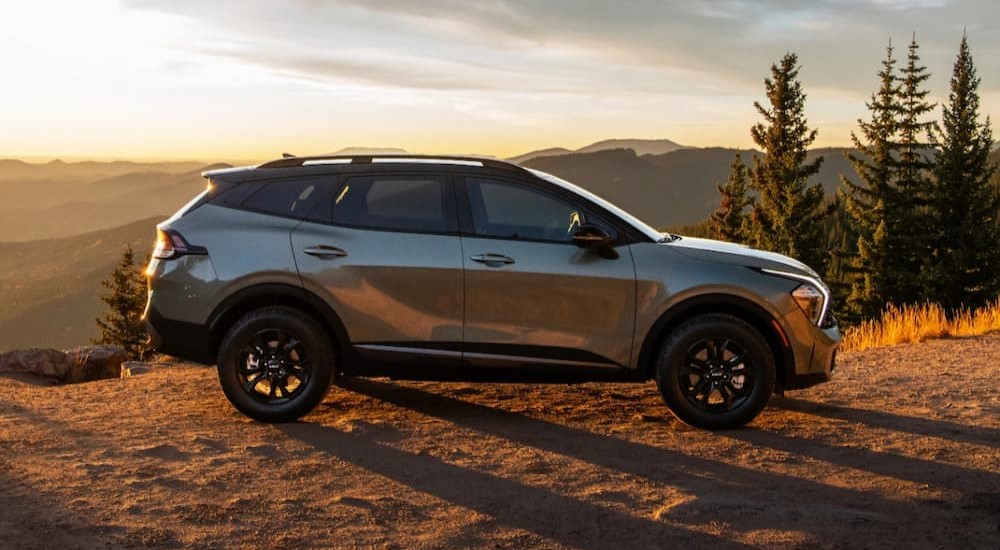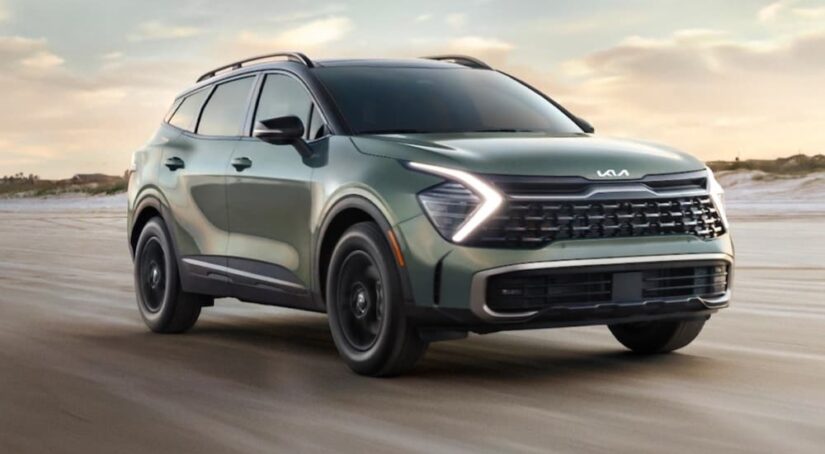In Kia’s lineup of SUVs, some models stand out clearly, while others are easy to mix up. There’s no misidentifying the proudly box-shaped Soul, but what about the other S-named SUVs? What differentiates a Kia Sportage for sale from a Seltos or a Sorento? If you’re not quite sure, then you’ve come to the right place, as we’re going to look at the differences between these three Kia nameplates, from size to style to standard features.
There are several things that all three models have in common, apart from the first letter of their names and the fact that they’re made by Kia. All three are available with efficient front-wheel drive but can also be had with all-wheel drive if you’re looking for increased traction, which can help you get a better grip on wet or unpaved roads. They also all have solid driving dynamics, delivering a smooth and comfortable ride in a variety of situations. Beyond that, though, there are plenty of differences that make each one a unique part of Kia’s lineup…
Models By Size
The biggest factor that differentiates these models is size. The Seltos is a subcompact SUV, the Sportage is a compact SUV, and the Sorento is a midsize SUV. Both the Seltos and Sportage have two rows of seating that can accommodate up to five people total, while the larger Sorento has a third row of seating so it can fit up to seven or eight people, depending on whether you opt for a second-row bench or a pair of captain’s chairs. You can fold down the rear row(s) of seating on any of them to increase cargo volume—and the larger the vehicle, the more cargo space you get.
In addition to dictating how much space there is inside the SUV, a model’s size also affects how expensive it is, both in terms of sticker price and fuel economy. The tiny Seltos has a starting price of $24,390, while the Sportage starts at $27,190, and the Sorento starts at $31,990. This makes sense since larger vehicles simply take more materials to make, which costs automakers more money.
Larger vehicles also tend to be heavier, which makes them generally less fuel-efficient. According to the EPA, the average 2024 vehicle gets 28 MPG combined. With the base powertrain and front-wheel drive, the Seltos is rated at 31 MPG combined, the Sportage at 28 MPG combined, and the Sorento at 26 MPG combined. However, those figures alone paint an overly simplistic picture since each model is available with multiple powertrain options, each with their own fuel economy ratings.

Powertrain Options
The Seltos may be the most fuel-efficient option if you opt for the base powertrain and FWD, but it’s also the only one of these SUVs that doesn’t have a hybrid option. If you upgrade your Seltos to AWD, you can stick with the 2.0L four-cylinder engine that comes standard to maintain an above-average fuel economy rating, dropping from 31 MPG combined to a still-respectable 29 MPG. But if you want more oomph, you’ll want to choose the 1.6L Turbo I-4 engine, which brings power up from 146 to 195 hp but drops fuel economy all the way down to 26 MPG combined.
The Sportage and Sorento have a similar lineup of powertrains to choose from. Both have a 2.5L four-cylinder traditional gas-powered engine as their base powertrain. This provides a maximum towing capacity of 2,500 lbs for the Sportage but only 2,000 lbs for the Sorento since the larger vehicle adds extra weight. To compensate for this, the Sorento has a turbocharged version of this engine that’s not available on the Sportage; it lowers fuel economy a bit but raises the maximum towing capacity to 3,500 lbs on most trims and 4,500 lbs on the X-Pro trim.
For improved fuel economy, you can get both the Sportage and Sorento as either a traditional hybrid or plug-in hybrid. The traditional hybrid gives the Sorento a rating of 37 MPG combined when paired with FWD and boosts the smaller Sportage all the way up to 43 MPG combined. If you have a charging station nearby, however, you can get even better numbers from a plug-in hybrid powertrain…
The Sportage PHEV gets up to 84 MPGe with a full charge and can drive for up to 34 miles in all-electric mode. Those numbers drop a bit for the Sorento but are still quite efficient, with a rating of 79 MPGe on a full charge and an all-electric range of 32 miles. The hybrid and PHEV powertrains for both the Sorento and Sportage can tow up to 2,000 lbs.
Trim Levels
If you’re familiar with the trim levels available for one of these models, you pretty much know what the trims are like for the other two as well. LX is the base trim: it’s affordable and doesn’t come standard with a lot of unnecessary comfort and convenience tech. The S is a step up, getting you a more stylish and comfortable interior. The EX has even more creature comforts, but not quite as much as the higher-tier SX. The Sportage and Sorento let you go even further with the SX Prestige.
Two trims don’t follow the pattern of just increasing the amount of comfort, convenience, and style: X-Line and X-Pro. Instead of increasing luxury, these trims bring a rugged look and feel to their SUVs, as well as varying degrees of off-road capability. The X-Line is available on all three models, adding things like roof rails for storing gear, equipment that enhances traction, and black exterior accents for a more sporty look. The X-Pro isn’t available on the Seltos but adds things like all-terrain tires and special multi-terrain drive modes to the Sportage and Sorento.
The hybrid models have similar trims but a more limited lineup than their traditional gas-powered counterparts. The Sportage traditional hybrid comes in LX, EX, or SX Prestige, while the plug-in hybrid is available only in X-Line and X-Line Prestige. Choices are even fewer for the Sorento, which only has EX and SX Prestige trims for its traditional hybrid, and the SX Prestige trim alone for its plug-in hybrid.
Exactly what features each trim level gives you varies from model to model. For instance, the Seltos S offers heated front seats as an available option, but heated front seats come standard on the Sorento S. Likewise, ventilated front seats come standard on the Sorento SX but not the Seltos SX or Sportage SX. Generally, the larger the model, the better the array of features it gets standard.
As one final example to illustrate this, let’s look at the front passenger seat: it’s a four-way manually adjustable affair on the Seltos, no matter what trim you get. While that setup is the only option for most trims of the Sportage, the SX Prestige and X-Pro Prestige both come standard with an eight-way power-adjustable version. On the Sorento, the eight-way power-adjustable seat is standard on EX and up, while the top two trims (X-Line SX Prestige and X-Pro SX Prestige) come standard with a ten-way power-adjustable seat with two-way power lumbar support.

Let’s Recap the Differences…
If you can remember the size order, from subcompact Seltos to compact Sportage and midsize Sorento, then it should be easy to keep some of the other differences straight as well. Larger models tend to get more powertrain options, more trim levels, and better-equipped interiors and, of course, they give you more passenger and cargo space.
Because they use more materials and weigh more, the larger models are more expensive and tend to be less fuel efficient—though that’s not the case if you opt for a hybrid, which can’t be done on the subcompact Seltos. Basically, when it comes to these SUVs, more is more: more size means more space, more cost, more fuel, more features, more trims, and more options.



